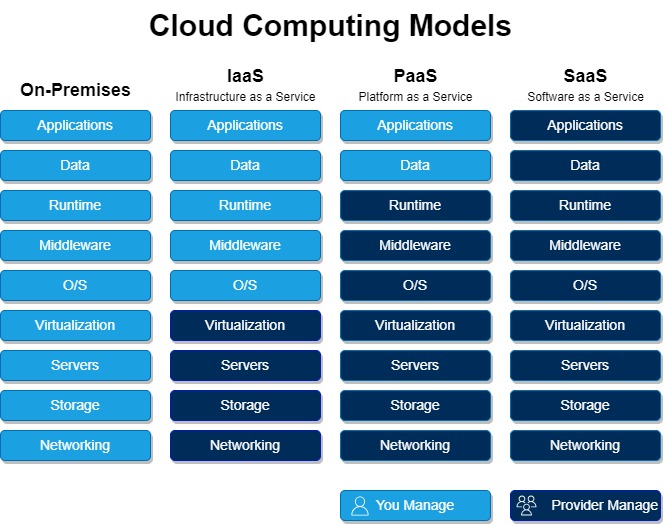Infrastructure as a Service (IaaS)
Contents
Infrastructure as a Service (IaaS)#
If your company, like many others, is always searching for methods to enhance efficiency and save expenses. Moving to a cloud-based infrastructure is one approach to do this. Infrastructure as a service (IaaS) is basically cloud computing and allows enterprises to access, manage, and use infrastructure resources in a scalable, pay-as-you-go approach. IaaS is an excellent choice for companies who want to shift to the cloud but don’t want to give up the control and flexibility that comes with owning their own infrastructure. You may decide how much or how little of your infrastructure to migrating to the cloud using IaaS.
IaaS (Infrastructure as a Service) is a cloud computing concept that gives consumers access to a virtualized computer environment. Applications and data may be run and stored in this environment. Pay-as-you-go pricing is common among IaaS providers, which can help consumers save money. For organizations that want more control over their IT infrastructure but don’t want to manage it themselves, IaaS might be a wonderful alternative. It’s also a viable option for companies that need to increase their infrastructure rapidly and easily. If you’re thinking about adopting IaaS, do your homework and pick a reliable service.

IaaS includes a wide range of services that may be divided into four categories:
Infrastructure Management Services: These services assist companies in managing and monitoring their information technology infrastructure. System and network administration, storage management, and security management are examples of functionality that can be included.
Infrastructure Services: These services offer organizations with the physical infrastructure they require, such as servers, storage, and networking.
Application Services: Businesses can use these services to execute apps on their infrastructure. Web hosting, databases, and email are examples of functionality that can be included.
Consulting and Support Services: These services assist organizations in making strategic decisions.
What are the benefits of using IaaS?#
There are several benefits of utilizing Infrastructure as a Service (IaaS), but the following are a few of the most notable: -Because you only pay for what you use, IaaS can help you save money on capital expenditures (CapEx). -Because you can quickly provide and expand resources as needed, IaaS can help you enhance your operational efficiency. -Because you can quickly replicate your infrastructure in the cloud, IaaS can help you increase your disaster recovery capabilities. -By providing you with a more secure and robust infrastructure, IaaS may help you enhance your security posture. IaaS may offer a variety of advantages to businesses of all sizes. If you want to upgrade your infrastructure,
What are the disadvantages of IaaS?#
There are a few drawbacks to consider when it comes to Infrastructure as a Service (IaaS). To begin with, IaaS might be pricey. You’re basically paying for someone else to look after and manage your infrastructure, which may rapidly mount up. Second, IaaS might be less dependable than managing your infrastructure on your own. While you’re paying someone else to handle it, they may not be as committed to keeping things going smoothly as you would. Finally, IaaS has a lower degree of flexibility than other solutions.
Final Words#
Infrastructure as a Service (IaaS) is a type of cloud Scalability, flexibility, and cost-effectiveness are just a few of the benefits over traditional IT infrastructure provisioning approaches. Before switching to IaaS, it’s crucial to understand the dangers. IaaS isn’t ideal for every company, and there are some security and privacy concerns to consider before making the transition.
See also
Do you want to get practical skills to work in cybersecurity or advance your career? Enrol in MCSI Bootcamps
